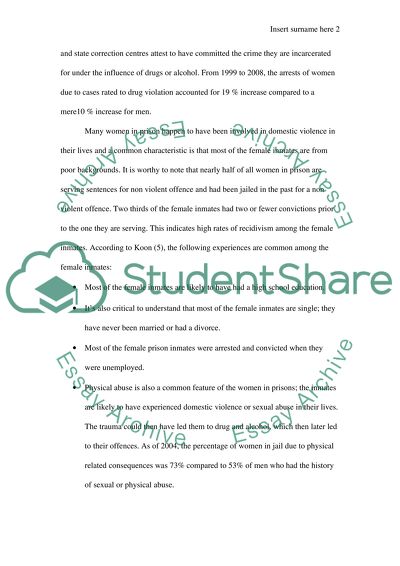Cite this document
(“Female Inmates (Corrections) Research Paper Example | Topics and Well Written Essays - 1750 words”, n.d.)
Female Inmates (Corrections) Research Paper Example | Topics and Well Written Essays - 1750 words. Retrieved from https://studentshare.org/law/1466294-female-inmates-corrections
Female Inmates (Corrections) Research Paper Example | Topics and Well Written Essays - 1750 words. Retrieved from https://studentshare.org/law/1466294-female-inmates-corrections
(Female Inmates (Corrections) Research Paper Example | Topics and Well Written Essays - 1750 Words)
Female Inmates (Corrections) Research Paper Example | Topics and Well Written Essays - 1750 Words. https://studentshare.org/law/1466294-female-inmates-corrections.
Female Inmates (Corrections) Research Paper Example | Topics and Well Written Essays - 1750 Words. https://studentshare.org/law/1466294-female-inmates-corrections.
“Female Inmates (Corrections) Research Paper Example | Topics and Well Written Essays - 1750 Words”, n.d. https://studentshare.org/law/1466294-female-inmates-corrections.


